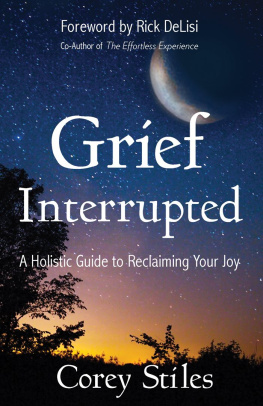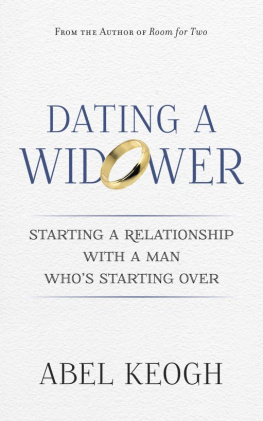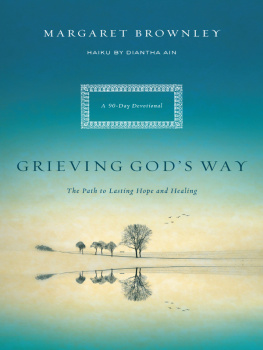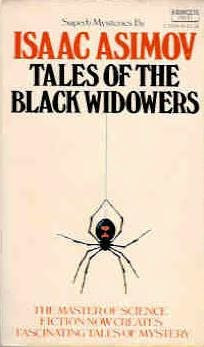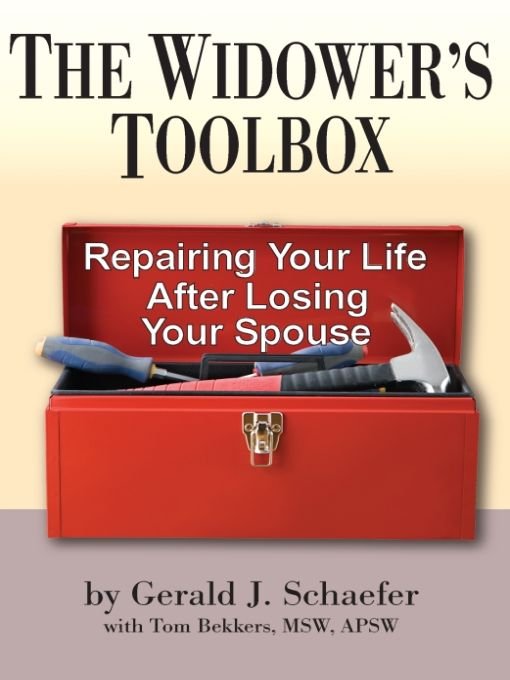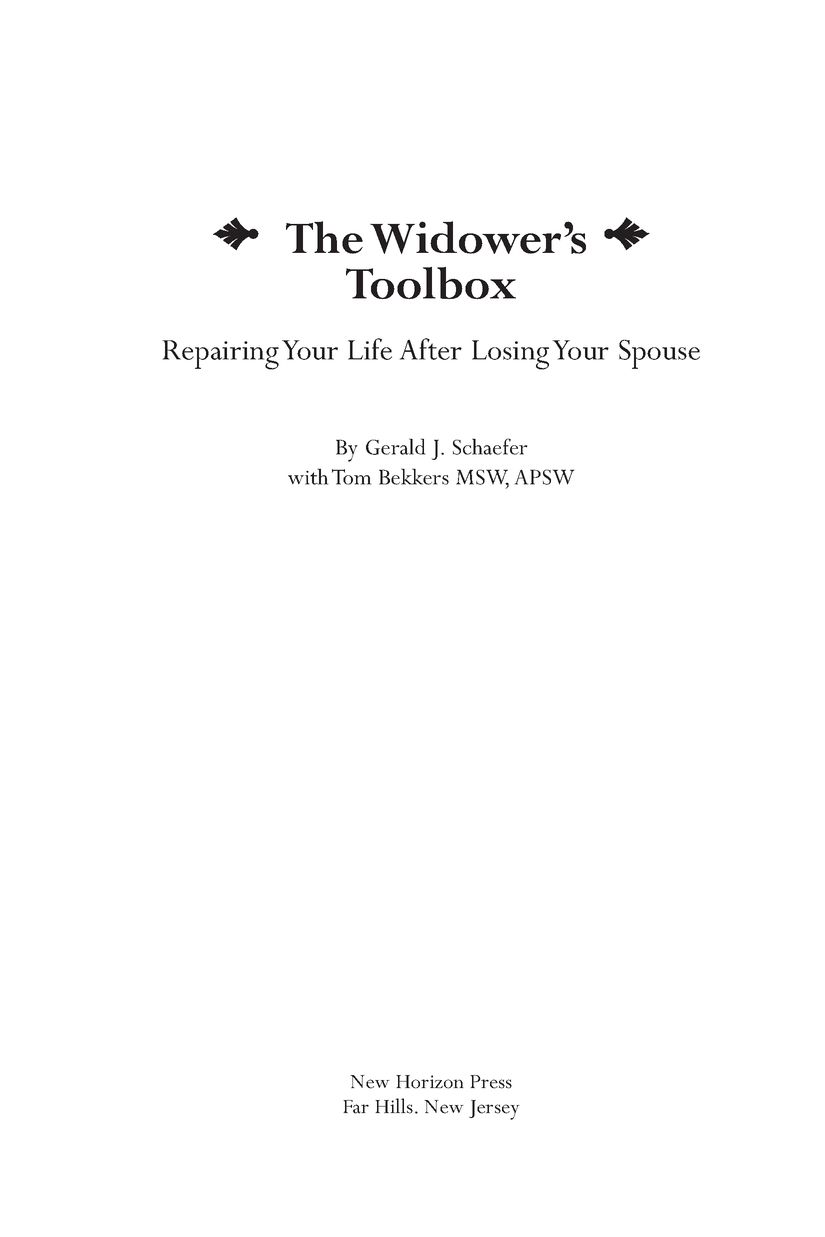Table of Contents
Unable are the loved to die. For love is immortality.
Emily Dickinson
To my wife Terri, the teacher, who taught me many things, but above alllove. I am eternally indebted to God for sending her to me.
Preface
I never saw it coming. My life was goodreally good. I had married my soul mate and we were well on our way toward living a true partnership and raising two wonderful sons. I had just walked five years with my wife through a minefield, doing everything I possibly could to help her defeat breast cancer, only to have the last step blow up in our faces. Terri, the woman with whom I was eagerly looking forward to growing old, died at the age of forty-five.
After Terris funeral, the task of moving forward in life seemed impossible. A wide range of emotions and thoughts flooded my mind in a seemingly endless sea of confusion. Would I ever be able to endure this grief? How would I manage the daily needs of my family? How would my financial situation change? How could I, as a single parent, continue to provide my sons with the balanced parenting that they had previously received? I felt as if my life was completely dismantled, every component scattered about needing my attention, yet I had no idea where to start to put it all back together. It was clear to me that if I was to achieve peace and happiness again for me and my sons, these issues would have to be resolved. There were repairs I needed to complete to have a functioning life again.
Since Terris diagnosis was terminal and her death imminent, I was as prepared as a person could possibly be, but it didnt make the pain any less, nor did it make the grieving process any easier for me. I had all the benefits and support systems a person could hope for when grieving the loss of a close loved one. My new employer gave me plenty of time off from work, in spite of the companys dire need of a person in my role. They offered, and I took advantage of, counseling through their employee assistance program. I was also counseled by members of Terris hospice care program. And I had family and good friends nearby to share in the grieving process and support me.
I had no idea how to grieve her loss, so I tried using the conventional resources afforded to me. I sat through the counseling sessions, read all the literature and even searched the Internet to learn as much as I could to help stop the pain and get my broken life fixed as best it could be. The vast majority of this knowledge came from professionally trained sources, and the information focused on explaining the grieving process to me. All the sources described the five stages of grief: denial, anger, bargaining, depression and acceptance. While I believe these stages describe grief accurately, I had no interest in any theories about it. For example, to be told that it is normal to feel angry didnt make the anger go away any faster nor did it make me feel better. It certainly did not help me make critical decisions about my future when I needed to do so.
Discussions with counselors, family and friends only gave me acknowledgment that my life was fractured and their assurance that I would eventually glue it back together. Those who had not experienced the death of a spouse could not provide me with what I felt I needed to hear at that timea way to sort through and to reassemble the pieces scattered in front of me into fixes that held together. I still felt that my healing process was incomplete. I eventually came to the realization that I had to grieve in a way that would work specifically for me. I discovered that I needed to find a different way to navigate myself out of this mess and gain the wisdom from doing it. I knew nothing would change unless I decided to do something constructive, so I began to reflect more on the best memories I had with Terri. I needed to clarify for myself what she really meant to me and our sons and examine the range of emotions that were keeping me from getting my life back together again.
So as I did this, I formulated by own plan for recovery. The activities found in this book are the ones which brought me relief from my own pain. And as I completed each of these tasks, a little bit more of my wound began to heal. I learned how to glue my life back together, one issue at a time, while seeing a picture of my new life take form. By doing these activities, I was able to take the needed steps toward healing, even if they were more cautious than normal. Completing the activities unfroze me and enabled me to move on with my life.
I rebuilt my life one concern at a time, from the first project of resetting my finances to the lastsending my sympathies to others with handmade cards Terri had crafted. Each was a step forward. Little did I realize at the time, I was fulfilling my male tendencies of immersing myself with the work of resolving the issues stemming from losing Terri. These repair projects tackled my instinct to become withdrawn by causing me to face the key issues of grief one job at a time. As I shared these activities and my experiences with other men who had also lost their wives, I received encouragement to do something with greater impact. I feel I want to share my newfound knowledge with others overwhelmed in their shattered worlds. This book is the result of my desire to help fellow widowers struggling with sorrow.
I truly hope you will find this book to be a guide that will help you gather the fragments of your grief and reassemble them into a meaningful, whole life again.
Introduction
The grieving process following the loss of ones spouse is, in my opinion, the most personal and difficult experience one may ever face. While the grieving process is very individualized regardless of gender, there are distinctive differences in the manner in which males and females grieve. Men in particular work hard to keep grief to themselves, to maintain emotional control and to refrain from asking for help. Because our culture has created this evolutionary position for men, a repair manual that addresses their needs in a manner that integrates with these behaviors can be an effective tool. Simply put, men are wired to continue to fulfill the role society has for them as strong problem solvers who can fix anything including their griefwithout asking for help. This book allows men to save face and live within that expectation, because it is written specifically for them in a format of a take-action approach, with the security of a repair reference at their sides.

Hospice told me about a group of recent widowers that met at a local restaurant. I thought I would try it, because in the early days it was really tough being home alone and trying to get a meaningful life back. The groups leader was about my age, but most of the guys were much older than me and I didnt think I had anything in common with them other than being a widower. I actually felt worse after going there, because I just couldnt relate to these guys. They called me and invited me back, but I felt so out of place I told them I couldnt go back. To talk about my grief in front of a large group in a public restaurant environment wasnt my preference. I think talking about it with guys more my age is a much more comfortable thing to do. I also think men and women grieve differently and people need to recognize thatboth from the outside looking in and those in grief.Joe




